#interferometer
Explore tagged Tumblr posts
Text
SciTech Chronicles. . . . . . . . .Jun 3rd, 2025
#landslide#fjord#seiches#SWOT#hemoglobin#Oxygen#vesicles#intravenous#metalenses#nanostructures#“nonlinear optics��#“lithium niobate”#“resilin-mimetic proteins”#self-sterilising#antibacterial#biocompatible#“Submesoscale Motions”#interferometer#“marine food webs”
0 notes
Text
The Michelson-Morley Experiment: Unveiling the Truth About Aether and Revolutionizing Modern Physics
The Michelson-Morley experiment, conducted in 1887 by Albert A. Michelson and Edward W. Morley, is one of the most famous and significant experiments in the history of physics. It was designed to detect the presence of a substance known as “aether,” which was once hypothesized to be the medium through which light waves travel, much like sound waves travel through air. In the late 19th century,…
0 notes
Text
Completely forgot that JUICE (JUpiter ICy moon Explorer) (space probe) has a piece of equipment called RIME
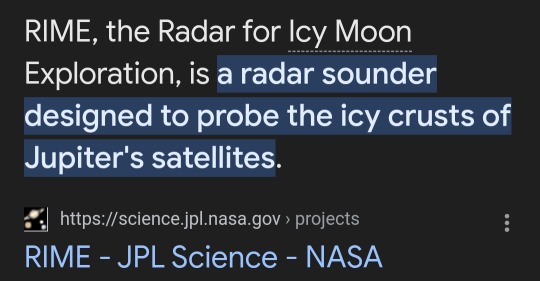
They 100% gave it that title on purpose so the acronym would be RIME btw. Because it has to do with ice. And they're all NERDS (affectionate).
Anyway Rime the Cat is REAL and in space!!!
#juice my beloved#some of the other instruments also have fun names#like PRIDE!! (Planetary Radio Interferometer and Doppler Experiment)#and two of the experiments for RPWI are called gandalf and frodo fjgjfhf#RPWI also uses sonic as its logo :]#big fan of juice if u couldn't tell. i've been keeping up with this baby for years#from its construction to its launch last year to its flybys soon!!#first flyby will be in august (there will be 3 earth flybys if i'm remembering right lol)#when it gets to jupiter in 2031 it would be my DREAM to work on the data it sends back#ough... well anyway. ramble over fjgjdhdg#vixentalks#rime the cat#<- yeah tagging this w her. that's my space probe instrument now!!
39 notes
·
View notes
Text
the motto rn is repeating "it can't possibly be that hard" as I talk myself through trying to figure out how an entire repository of code I didn't write using a library noted for being hard to deal with for something I haven't talked to anyone about in a whole month like it's definitely that hard, why do I need to lie to myself
#physics#research#this is what I do instead of counting interferometer fringes with my rusty ass eyeballs
8 notes
·
View notes
Text
Scientists Discover Long Theorized 'Low Hum' Created by Supermassive Black Holes
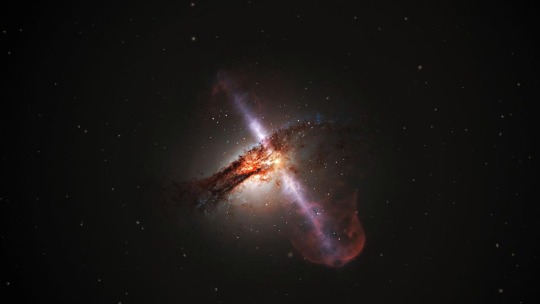
Scientific theories surrounding gravitational wave background signals may provide clues about the earliest days of the universe.
An international team of astronomers has discovered a faint hum that permeates the universe and will provide them clues about supermassive black holes, colliding galaxies and possibly the Big Bang.
The North American Nanohertz Observatory for Gravitational Waves (NANOGrav) published a study on Wednesday showcasing evidence of the long theorized but never proven gravitational wave background (GWB) noise, a type of signal they believe emanates from supermassive black holes and colliding galaxies and may contain traces of the gravitational ripples caused by the Big Bang.
Four of the study’s six papers were published in the Astrophysical Journal Letters, the remaining two have been accepted for publication at a later date. The discovery was first made in 2021, but the culmination of their work is just now being published.

‘Humming Universe’: Hint of Gravitational Wave ‘Background’ Detected As Study Probes Cosmic Mystery! visual of gravitational waves from two converging black holes is depicted on a monitor behind Laser Interferometer Gravitational-Wave Observatory (LIGO) Co-Founder Kip Thorne as he speaks to members of the media following a news conference at the National Press Club in Washington, Thursday, Feb. 11, 2016. © AP Photo/Andrew Harnik
While GWB had been theorized before, no direct evidence had been found until now.
Gravitational waves themselves are also technically a recent discovery. While they were first described in Einstein’s 1915 Theory of General Relativity, they had not been detected until 2015.
While every piece of matter in the universe emits gravitational waves - most of them are undetectable - scientists can only hope to observe the effects of some of the largest bodies in the universe.
That finally happened when the Laser Interferometer Gravitational-wave Observatory (LIGO) detected them for the first time in 2015. The LIGO shoots lasers down three-mile-long perpendicular tubes, with the hope that a gravitational wave will pass over it, causing one laser to shrink slightly while the other grows.
Started in 1994 and first completed in 1997, the LIGO cost $395 million to build and didn’t detect any waves for the first 10 years of its existence. It shut down temporarily for a $200 million upgrade and renovation before finally detecting a gravitational wave that scientists believe came from two black holes, roughly 30 times the size of the sun each, colliding about 1.3 billion light-years from Earth.
But LIGO is not capable of detecting GWB created by super massive black holes, which range from 100,000 to six billion times the size of the sun.
So instead, the scientists at NANOGrav looked to the stars, or more specifically pulsars.
Pulsars are dead stars, also known as neutron stars, that are highly magnetic and rotate roughly 700 times a second. Their spin is incredibly consistent and looks like flickering when observed from Earth. They are sometimes compared to lighthouses or clocks because of their consistency.
The NANOGrav astronomers watched pulsars for 15 years across different observatories in West Virginia, Puerto Rico, New Mexico and Canada, waiting for tiny variations that would indicate a gravitational wave from a supermassive black hole.
They were able to distinguish the signal from other gravitational waves because of the pattern it passed through the pulsar. GWBs are unique from other gravitational waves because they come so close together they overlap. The researchers describe it by comparing it to hearing a crowd of people talking at once. At first, it sounds like a low consistent hum, until you concentrate and can pick out specific conversations.
The same became true of GWBs once astronomers were able to detect the tiniest variations. Officials say they could predict the pulses from the pulsars down to 1 microsecond, the equivalent of measuring the distance of the moon within a thousandth of a millimeter.
“We are extraordinarily excited to see this pattern pop out finally,” said Stephen Taylor, a gravitational wave astrophysicist at Vanderbilt University, who co-led the research.
While scientists aren’t positive about the source of the GWB, it mirrored theories about the types of gravitational waves thought to be created by supermassive black holes.
Scientists also say the rate of the waves is increasing, suggesting there may be hundreds or even thousands of supermassive black holes that have not yet been discovered. The signals may help us discover where some of these objects are and how they work, as well as provide scientists clues into the formation of galaxies and even the universe.

Gravitational Waves May Be Generated From Debris Fields Around Dying Stars — Study June 7, 2023!
Scientists previously feared supermassive black holes would never collide and just continually orbit each other; this was called the “final parsec problem” in the astrophysicist community.
“To get these types of high amplitudes that we are seeing, we need fairly massive black holes, and they need to form binaries [aka supermassive black holes] quite frequently and evolve quite efficiently,” Luke Zoltan Kelley, an assistant professor at the University of California, Berkeley who participated in the NANOGrav study, said in a statement.
He adds if it is confirmed that the waves came from a supermassive black hole, “then they absolutely had to have passed the final parsec one way or another.”
— Ian DeMartino, Sputnik International, Wednesday June 28, 2023
#Laser Interferometer Gravitational-Wave Observatory (LIGO)#Gravitational Waves#Science & Tech.#Puerto Rico 🇵🇷#West Virginia#Earth#Albert Einstein
2 notes
·
View notes
Photo
I'd like to add the core of LOFAR (a radio telescope interferometric array) to the above:

And also a zoom in of the centre of the above image:

(apologies for the terrible image quality, the only directly-overhead views I could get were screenshots from Google Earth)





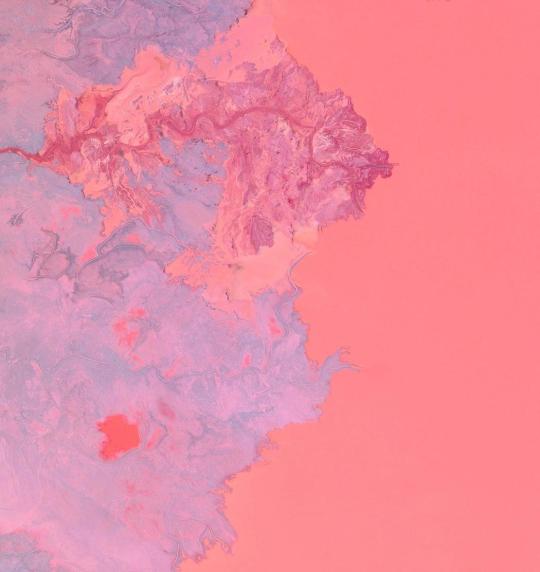

Echoes of Geometry: A Symphony of Patterns in Earth’s Embrace
#in my incredibly biased opinion MeerKAT looks cooler#but tbf MeerKAT can't beat the visual of an interferometer fit within a near-perfect circle
2K notes
·
View notes
Text
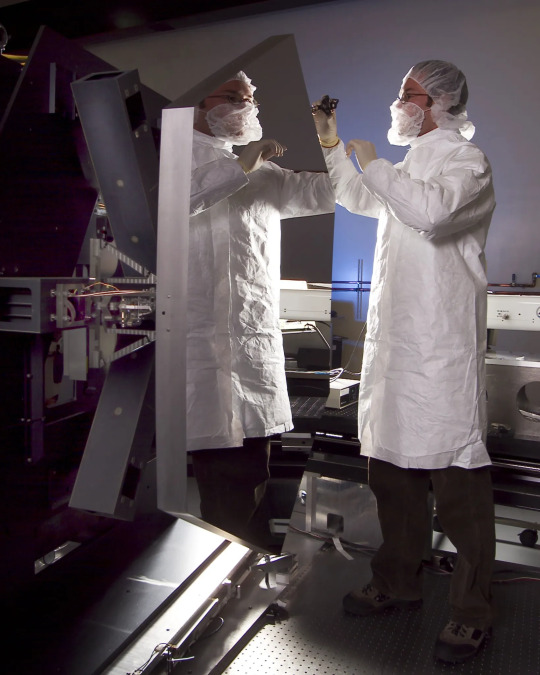
Since many materials change shape when they change temperature, a test team from Ball Aerospace worked together with NASA engineers at Marshall’s X-ray and Cryogenic Facility (XRCF) to cool the mirror segments down to the temperature Webb is experiencing in deep space, -400 degrees Fahrenheit (-240 degrees Celsius).
Cryogenic testing of the primary mirror segments began in at Marshall’s XRCF by Ball Aerospace in 2009.
The change in mirror segment shape due to the exposure to these cryogenic temperatures was recorded by Ball Aerospace Engineers using a laser interferometer. This information, together with the mirrors, traveled back to California for final surface polishing at Tinsley. The mirrors’ final polish was completed in June of 2011.
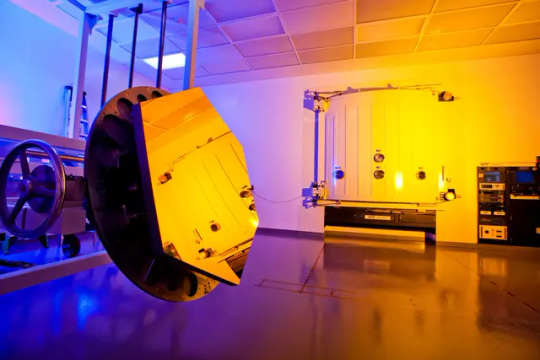
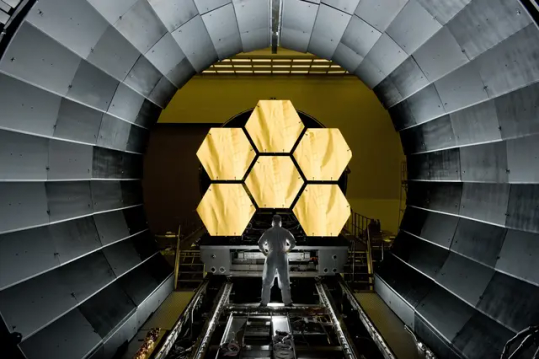
By the end of 2013, all the flight primary mirror segments, as well as the secondary and tertiary mirrors would be at Goddard. The mirrors were stored in special protective canisters in the cleanroom, awaiting the arrival of the flight telescope structure.
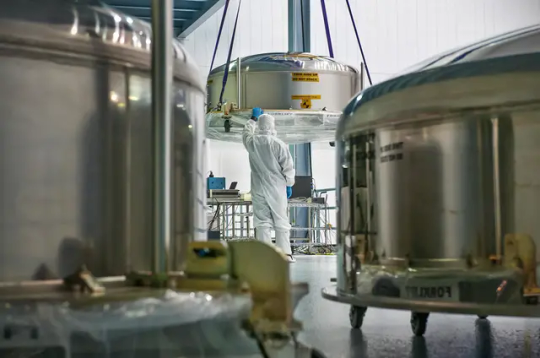
Inside a massive clean room at NASA’s Goddard Space Flight Center in Greenbelt, Maryland the James Webb Space Telescope team used a robotic arm to install the last of the telescope’s 18 mirrors onto the telescope structure.
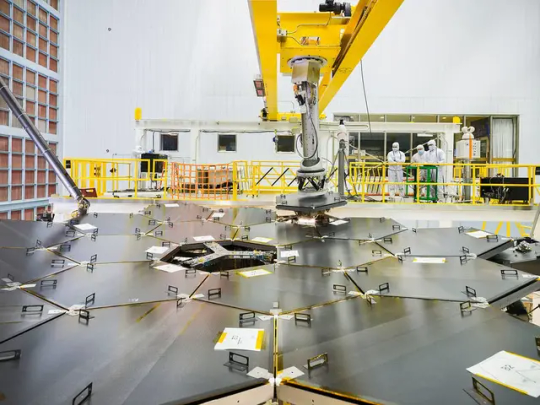

James Webb Space Telescope Mirror Seen in Full Bloom

Once the mirrors were completed, the science instruments were integrated into the telescope. While at Goddard, the telescope also underwent environmental testing – both acoustic and vibration – to ensure it would be able to withstand the rigors of launch. That successfully completed, the telescope was sent off to NASA Johnson in Houston, Texas, for tests of the optics and instruments at cryogenic temperatures. NASA Johnson’s Chamber A is the only thermal vacuum chamber NASA has that is large enough for Webb!
Once the telescope reached orbit, engineers on Earth made adjustments/corrections to the positioning of the Webb telescope’s primary mirror segments to bring them into alignment – to ensure they would produce sharp, focused images.
#science#nasa#goddard#james webb space telescope#james webb telescope#jwst#telescope#astronomy#physics#nasa johnson#johnson space center#houston texas#mirror polishing#Ball Aerospace#Marshall’s X-ray and Cryogenic Facility (XRCF)#xrcf#cryogenic#cryogenic testing#engineering#laser interferometer#goddard space flight center#jwst full bloom#science instruments#science achievement#human achievement
6 notes
·
View notes
Text
Antares: The Drama Queen of the Night Sky
One of the largest and most awe-inspiring stars in the sky has recently taken center stage for a celestial close-up. Antares, a red supergiant located over 600 light-years away, boasts an outer envelope so vast that it could stretch all the way to Jupiter if placed at the center of our solar system. Astronomers used the European Southern Observatory’s Very Large Telescope Interferometer (VLTI)…
0 notes
Text
Beholding Black Hole Power with the Accretion Explorer Interferometer
Kimberly WeaverNASA Goddard Space Flight Center Some of the most enigmatic objects in the Universe are giant supermassive black holes (SMBH). Yet after 30 years of study, we don’t know precisely how these objects produce their power. This requires observations at X-ray wavelengths. The state-of-the-art for X-ray images is Chandra (~0.5-1 arcsecond resolution) but this […] from NASA https://ift.tt/oSvDpgf
1 note
·
View note
Text
Laser light simultaneously shot down vacuum tunnels inside each tube, and reflected back by highly polished mirrors, is used to measure the relative length of each to fantastic accuracy.
"The Fabric of the Cosmos" - Brian Greene
#book quote#the fabric of the cosmos#brian greene#nonfiction#laser#light#vacuum#tunnels#laser interferometer gravitational wave observatory#ligo#fantastic#accuracy
0 notes
Text
The Brain: A Pressure Symphony of Classical and Quantum

Imagine the brain as a grand orchestra, with neurons acting as individual musicians. Quantum mechanics could be the hidden conductor, orchestrating the flow of information in a way that classical physics alone cannot explain. Just as a conductor can coax a powerful and moving performance from an orchestra, the brain, if it leverages quantum phenomena, could be capable of extraordinary feats of information processing and creativity. The more we understand the score – the laws of physics, both classical and quantum – the better equipped we are to appreciate the magnificent performance that is capable of the human brain.
Imagine the human brain not just as a complex network of neurons, but as a sophisticated quantum reservoir computer. This mind-bending hypothesis posits that the brain utilizes the bizarre laws of quantum mechanics to enhance its processing capabilities. While still theoretical, it opens doors to a universe of possibilities about how our brains might truly function.
Quantum Mechanics: The Maestro of the Dance:
Unlike the billiard-ball certainty of classical physics, quantum mechanics governs the microscopic world, introducing fascinating concepts like:
Superposition: A mind-boggling state where particles can exist in multiple states simultaneously, like a coin spinning on its edge, heads and tails at once, until a measurement forces it to choose.
Entanglement: Two particles become eerily linked, sharing a fate regardless of distance. Imagine flipping two coins, and no matter how far apart they are, they always land on the same side.
Plausible Mechanisms: Where Quantum and Classical Collide:
Could these phenomena play a role in the brain's remarkable abilities? Here are some possibilities grounded in current research:
Microtubules: Quantum Stagehands: Microtubules, tiny cellular structures, might be the key players. These hollow tubes could act as waveguides, channeling quantum information within the brain. Imagine them as microscopic fiber optic cables, but for the bizarre world of quantum phenomena.
Quantum-Assisted Signal Processing: Brain function relies on the rapid exchange of information between neurons. Quantum effects could potentially supercharge this communication, facilitating faster or more efficient signal transmission. Think of it as a quantum boost for our neural network, allowing information to flow with unprecedented speed and efficiency.
Stochastic Resonance: Embracing the Noise: Our brain might utilize a fascinating phenomenon called stochastic resonance. Imagine weak signals buried in noise. The brain could amplify these faint signals by incorporating quantum noise, enhancing its ability to make decisions in ambiguous situations.
Non-local Information Processing: Accordance (https://www.tumblr.com/ultrimio/748348095336677377/analyzing-the-intriguing-phenomenon-of?source=share) suggests that the receiver's action can influence the sender's message. Could the brain, through some unknown mechanism, utilize this principle for non-local information processing, potentially explaining phenomena like telepathy? This is highly speculative, but it highlights the need for further exploration beyond established physics.

The Brain as a Quantum Interferometer: Decoding the Universe's Symphony:
The brain's intricate structure might even act as a quantum interferometer. Just like a classical interferometer splits light waves to reveal hidden information, the brain could interact with external waves, potentially including:
Hypothetical Pressure Waves: These theorized waves could ripple through the fabric of the universe itself, carrying energy and information across vast distances. Imagine the brain acting as an antenna, picking up these subtle cosmic whispers and deciphering their secrets.
Info-Quanta: The Building Blocks of Reality?: Some physicists propose that these pressure waves are composed of fundamental units called info-quanta (similar to the luminiferous aether), the very building blocks of information itself. The brain, as a quantum interferometer, could interact with these info-quanta, potentially gaining a deeper understanding of the universe's underlying code.
Additional info on the luminiferous aether: The concept of luminiferous aether refers to a theoretical substance that was once believed to fill the universe and act as a medium for the propagation of light and other electromagnetic phenomena. Initially proposed in the 19th century, the luminiferous aether hypothesis faced significant challenges and was ultimately refuted by experiments like the Michelson-Morley experiment, leading to the development of modern physics theories like the special theory of relativity. Despite being debunked, recent research has reignited interest in the aether, with some suggesting that it could potentially unify physics by explaining phenomena like dark matter and dark energy.
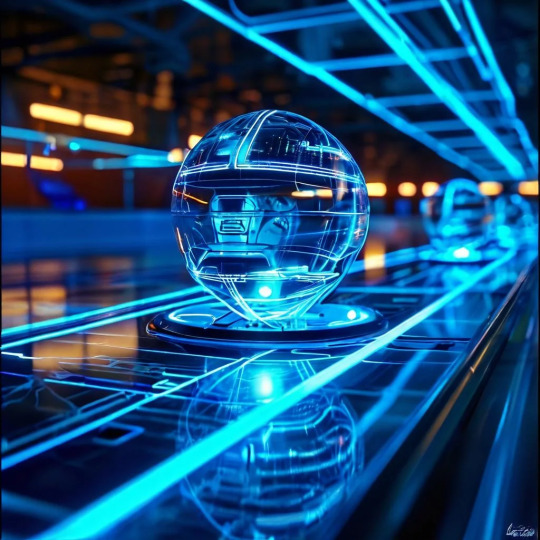
Unexplored Innovations: A Glimpse into the Quantum Future:
The implications of these ideas are mind-blowing:
Enhanced Cognition: Imagine a future where the brain, leveraging quantum phenomena, possesses an unimaginable processing power, leading to breakthroughs in fields like artificial intelligence and problem-solving.
Quantum-Inspired Communication: Perhaps the brain can directly interact with these pressure waves, facilitating communication beyond the limitations of space and time. Imagine telepathy becoming a reality, not through magic, but through the power of quantum mechanics.
Quantum Healing: If the brain can manipulate quantum processes at a cellular level, it could potentially influence biological functions and even facilitate healing on a deeper level. Imagine a future where diseases are tackled by harnessing the power of the quantum brain.
Challenges and Considerations:
While these ideas are captivating, significant hurdles remain:
Limited Evidence: Currently, there's no definitive proof that quantum processes directly influence brain function. Further research is needed to validate these hypotheses.
Technical Hurdles: Measuring and manipulating quantum phenomena within a complex biological system like the brain presents immense challenges. Imagine trying to study the behavior of subatomic particles in a constantly firing neural network!
Alternative Explanations: Many aspects of brain function can be explained by classical physics. It's crucial to explore all avenues before definitively saying the quantum world plays a central role.
A Symphony Awaits:
The exploration of the brain as a quantum reservoir computer and potential interferometer pushes the boundaries of our understanding. While the concepts remain speculative, focusing on plausible mechanisms and fostering interdisciplinary collaboration between physicists, neuroscientists, and quantum biologists holds the key to unlocking the brain's true potential. The future of neuroscience might reveal a fascinating symphony where classical and quantum mechanics intertwine
#quantum reservoir computer#quantum interferometer#pressure waves (hypothetical)#info-quanta (hypothetical)#non-local fabric (hypothetical)#quantum coherence#stochastic resonance#microtubules
1 note
·
View note
Link
Screenshot of the Zygo white light interferometry microscope software. (Credit: Huygens Optics) Whit...
0 notes
Text
window open, nice breeze, tegan and sara cd on 🥰
lab report due 17 hours ago 💥💥💥😵☄️
#i am in Lab Report Hell#michelson. why did you have to make an interferometer#physicsblr#<perhaps that is a thing?#k
2 notes
·
View notes
Text
Capturing The Ripples of Spacetime: LISA Gets Go-ahead
— January 25th, 2024
Today, ESA’s Science Programme Committee approved the Laser Interferometer Space Antenna (LISA) mission, the first scientific endeavour to detect and study gravitational waves from space.
This important step, formally called ‘adoption’, recognises that the mission concept and technology are sufficiently advanced, and gives the go-ahead to build the instruments and spacecraft. This work will start in January 2025 once a European industrial contractor has been chosen.
LISA is not just one spacecraft but a constellation of three. They will trail Earth in its orbit around the Sun, forming an exquisitely accurate equilateral triangle in space. Each side of the triangle will be 2.5 million km long (more than six times the Earth-Moon distance), and the spacecraft will exchange laser beams over this distance. The launch of the three spacecraft is planned for 2035, on an Ariane 6 rocket.
Led by ESA, LISA is made possible by a collaboration between ESA, its Member State space agencies, NASA, and an international consortium of scientists (the LISA consortium).
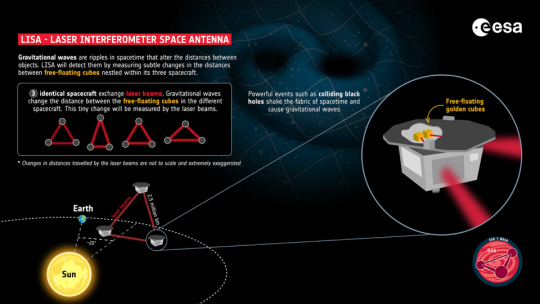
LISA – Measuring Gravitational Waves
Bringing ‘Sound’ To The Cosmic Movie
Just over a century ago, Einstein made the revolutionary prediction that when massive objects accelerate, they shake the fabric of spacetime, producing miniscule ripples known as gravitational waves. Thanks to modern technological developments, we are now able to detect these most elusive of signals.
“LISA is an endeavour that has never been tried before. Using laser beams over distances of several kilometres, ground-based instrumentation can detect gravitational waves coming from events involving star-sized objects – such as supernova explosions or merging of hyper-dense stars and stellar-mass black holes. To expand the frontier of gravitational studies we must go to space,” explains LISA lead project scientist Nora Lützgendorf.
“Thanks to the huge distance travelled by the laser signals on LISA, and the superb stability of its instrumentation, we will probe gravitational waves of lower frequencies than is possible on Earth, uncovering events of a different scale, all the way back to the dawn of time.”

The Spectrum of Gravitational Waves
LISA will detect, across the entire Universe, the ripples in spacetime caused when huge black holes at the centres of galaxies collide. This will enable scientists to trace the origin of these monstrous objects, to chart how they grow to be millions of times more massive than the Sun and to establish the role they play in the evolution of galaxies.
The mission is poised to capture the predicted gravitational ‘ringing’ from the initial moments of our Universe and offer a direct glimpse into the very first seconds after the Big Bang. Additionally, because gravitational waves carry information on the distance of the objects that emitted them, LISA will help researchers measure the change in the expansion of the Universe with a different type of yardstick from the techniques used by Euclid and other surveys, validating their results.
Closer to home, in our own galaxy, LISA will detect many merging pairs of compact objects like white dwarfs or neutron stars and give us a unique insight into the final stages of the evolution of these systems. By pinpointing their position and distances, LISA will further our grasp of the structure of the Milky Way, building upon the findings from ESA's Gaia mission.
“For centuries we have been studying our cosmos through capturing light. Coupling this with the detection of gravitational waves is bringing a totally new dimension to our perception of the Universe,” remarks LISA project scientist Oliver Jennrich.
“If we imagine that, so far, with our astrophysics missions, we have been watching the cosmos like a silent movie, capturing the ripples of spacetime with LISA will be a real game-changer, like when sound was added to motion pictures.”

Golden Cubes For LISA
Golden Cubes and Laser Beams
To detect gravitational waves, LISA will use pairs of solid gold-platinum cubes – so called test masses (slightly smaller than Rubik’s cubes), free-floating in special housing at the heart of each spacecraft. Gravitational waves will cause tiny changes in the distances between the masses in the different spacecraft, and the mission will track these variations using laser interferometry.
This technique requires shooting laser beams from one spacecraft to the other and then superimposing their signal to determine changes in the masses’ distances down to a few billionths of a millimetre.
The spacecraft must be designed to ensure that nothing, besides the geometry of spacetime itself, affects the movement of the masses, which are in freefall.
Solid Heritage and Future Teamwork
The spacecraft follows in the footsteps of LISA Pathfinder, which demonstrated that it is possible to keep the test masses in freefall to an astonishing level of precision. The same precision propulsion system that has also been flown on ESA’s Gaia and Euclid missions will ensure that each spacecraft maintains the required position and orientation with the highest accuracy.
Selected to be the third large mission of ESA’s Cosmic Vision 2015–2025, LISA will join ESA’s science fleet of cosmic observers to address two essential questions at the heart of the programme: What are the fundamental physical laws of the Universe? How did the Universe originate and what is it made of?
In this quest, LISA will work together with ESA’s other large mission currently under study: NewAthena. With a launch date foreseen for 2037, NewAthena is set to be the largest X-ray observatory ever built.
Notes For Editors:
ESA leads the LISA mission and will provide the spacecraft, launch, mission operations and data handling. Key instrumental elements are the free-falling test masses shielded from external forces, provided by Italy and Switzerland; the picometre-accuracy systems to detect the interferometric signal, provided by Germany, the UK, France, the Netherlands, Belgium, Poland and the Czech Republic; and the Science Diagnostics Subsystem (an arsenal of sensors across the spacecraft), provided by Spain. The ultra-stable lasers, the 30 cm telescopes to collect their light, and the sources of UV light (to discharge the test masses) will be provided by NASA.
#ESA | Science & Exploration | Space Science#Laser Interferometer Space Antenna (LISA)#NASA#European Space Agency (ESA)#Science & Exploration
1 note
·
View note
Text
Top Interferometers Suppliers In India: Empowering Innovation

Modern interferometers are essential tools in Physics, and Interferometers Suppliers In India are vital to the supply of these devices. These vendors ensure the availability of top-notch tools for verifying the accuracy of optical components and measuring short distances and wavelengths. As the top Interferometers Suppliers in India, we at Indosaw are dedicated to offering the best learning resources. Join forces with us to get instruments of unmatched quality, such as interferometers, which ensure accuracy and dependability for scientific research.
#Interferometers Suppliers In India#Best Interferometers Suppliers In India#Top Interferometers Suppliers In India#Interferometers Suppliers#Best Interferometers Suppliers#Top Interferometers Suppliers
0 notes
Text
A Glimpse into Precision Optics with Wonders of Fiber Interferometer
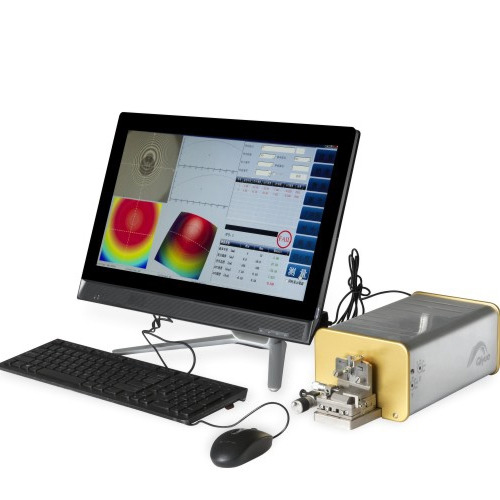
A fiber interferometer is an optical device created to make use of light's wave-like properties for accurate measurements. It works by combining two or more light waves to produce a resultant wave that carries data about their relative phases. This process is known as the interference principle.
Important Elements and Operating Principles
The optical fibers at the center of a fiber interferometer transmit light across great distances with little loss. The fundamental arrangement is utilizing a beam splitter to divide a single light beam into two directions. Before coming back together at a detector, these pathways pass via several fiber arms. An interference pattern, often known as a pattern of alternately light and dark fringes, is produced by the interference between the two beams. The Fiber Interferometer can detect even the smallest changes in the physical values being measured by analyzing variations in this pattern. You can buy a visual fault locator online.
Applications in a Wide Range of Fields
Metrology and Accurate Measuring: In metrology labs and the industrial sector, fiber interferometers are widely used for accurate length measuring, surface profiling, and alignment. They are essential instruments for quality assurance and calibration procedures because of their excellent precision and stability.
Environmental Sensing: To identify minute variations in temperature, pressure, and refractive index, these instruments are used in environmental monitoring systems. They help us comprehend the dynamics of the oceans, the atmosphere, and the geological processes on Earth.
Characterization of Materials: Researchers use Fiber Interferometers to examine the mechanical and thermal characteristics of materials, assisting in the development of innovative materials for the electronics, aerospace, and automotive sectors.
Detection of Gravitational Waves: In the field of astrophysics, Fiber Interferometers are a vital component of complex systems, which made significant gravitational wave discoveries that supported Einstein's general theory of relativity and opened up new research directions.
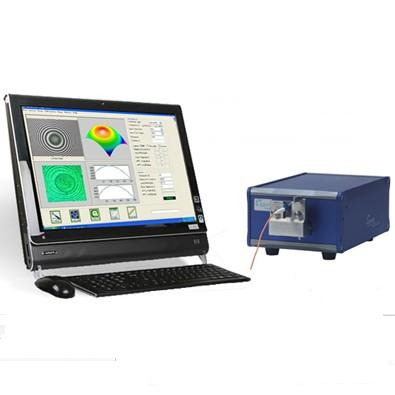
Outlooks for the Future Fiber interferometers and fiber identifier have a remarkably bright future. More sensitive and compact interferometers are being created as a result of developments in nanotechnology and materials science. They are being improved to increase their performance and reliability for a wider variety of applications. Fiber Interferometers may play a crucial role in quantum computing, secure communication, and other cutting-edge industries as technology advances.
Main source: https://sunmafiber.mystrikingly.com/
1 note
·
View note